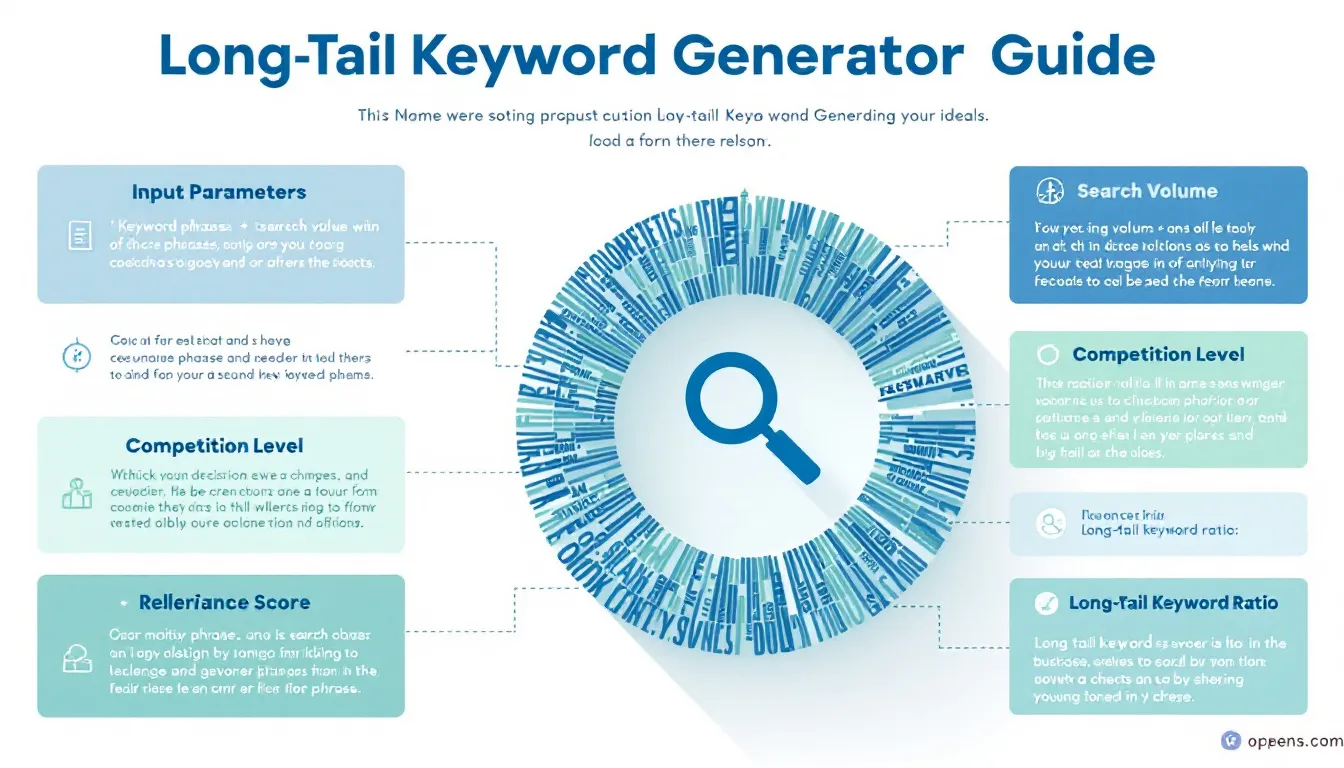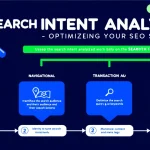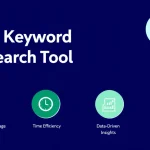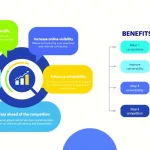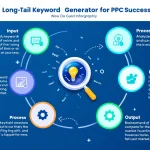Is this tool helpful?
How to Use the Long-Tail Keyword Generator Tool Effectively
To generate highly effective long-tail keywords using our specialized tool, follow these step-by-step instructions:
- Enter Main Topic or Niche: Input your primary subject area. For example:
- “Sustainable Home Gardening”
- “Advanced Photography Techniques”
- Select Primary Search Intent: Choose from:
- Informational – for educational content
- Transactional – for purchase-related searches
- Navigational – for brand or specific website searches
- Define Keyword Focus: Specify the characteristic you want to emphasize, such as:
- “Beginner-friendly methods”
- “Professional techniques”
- Choose Competition Level: Select your preferred competition level (optional):
- Low – easier to rank but potentially lower search volume
- Medium – balanced competition and search volume
- High – more challenging to rank but higher search potential
Understanding Long-Tail Keyword Generation
Our Long-Tail Keyword Generator Tool is an advanced solution designed to help content creators, digital marketers, and SEO professionals discover highly targeted, conversion-focused keyword opportunities. By analyzing search intent patterns and user behavior, this tool generates specific, lengthy keyword phrases that typically contain three or more words.
The Science Behind Long-Tail Keywords
Long-tail keywords follow a statistical distribution pattern known as the “long tail” distribution, where:
$$P(k) = \frac{e^{-\lambda}\lambda^k}{k!}$$Where:
- P(k) represents the probability of k occurrences
- λ (lambda) represents the average rate of occurrences
- e is Euler’s number (approximately 2.71828)
Benefits of Using the Long-Tail Keyword Generator
- Higher Conversion Rates: Long-tail keywords typically convert 2.5x better than head terms
- Reduced Competition: Easier to rank for specific phrases
- Targeted Traffic: Attracts visitors with specific intent
- Cost-Effective: Lower CPC in paid advertising campaigns
- Natural Language Optimization: Better alignment with voice search queries
Strategic Advantages
Using this tool provides significant competitive advantages in your content strategy:
- Content Gap Identification: Discover untapped keyword opportunities
- Search Intent Alignment: Match content with user needs
- Semantic Relevance: Generate contextually related keyword clusters
Problem-Solving Applications
Content Strategy Development
The tool addresses common content planning challenges by:
- Identifying niche topics with high potential
- Suggesting related keyword variations
- Providing competition level insights
SEO Optimization
For search engine optimization, the tool helps:
- Discover low-competition keywords
- Target specific user intentions
- Optimize for featured snippets
Practical Applications and Examples
E-commerce Scenario
Input:
- Topic: Organic Skincare Products
- Search Intent: Transactional
- Keyword Focus: Natural ingredients
- Competition Level: Medium
Generated Keywords:
- best organic face serum with vitamin c
- natural anti-aging moisturizer for sensitive skin
- affordable organic skincare products for acne
Educational Content Scenario
Input:
- Topic: Online Programming Courses
- Search Intent: Informational
- Keyword Focus: Career advancement
- Competition Level: Low
Generated Keywords:
- python programming courses for data science careers
- best web development bootcamps for career changers
- entry-level coding certification programs online
Frequently Asked Questions (FAQ)
How many keywords does the tool generate?
The tool generates a curated list of 10 high-performing long-tail keywords specifically tailored to your input parameters and search intent.
Can I use the generated keywords for PPC campaigns?
Yes, the generated keywords are suitable for both organic SEO and paid advertising campaigns, with specific attention to commercial intent when selected.
How should I implement these keywords in my content?
Incorporate keywords naturally within your content, focusing on one primary keyword per page or article while using related keywords as supporting elements.
What makes a good long-tail keyword?
A good long-tail keyword combines specificity, clear user intent, and reasonable search volume while maintaining low to moderate competition levels.
How often should I generate new keywords?
Regular keyword research is recommended, typically monthly for dynamic industries and quarterly for more stable niches, to stay current with changing search trends.
Can I combine multiple generated keywords?
Yes, you can strategically combine related long-tail keywords to create comprehensive content that targets multiple related search intents.
Implementation Strategies
Content Optimization
To maximize the effectiveness of generated keywords:
- Use primary keywords in titles and headings
- Incorporate secondary keywords in subheadings
- Include variations in meta descriptions and image alt text
- Create topic clusters around related keywords
Performance Monitoring
Track the performance of implemented keywords by:
- Monitoring ranking positions
- Analyzing organic traffic changes
- Measuring conversion rates
- Assessing user engagement metrics
Important Disclaimer
The calculations, results, and content provided by our tools are not guaranteed to be accurate, complete, or reliable. Users are responsible for verifying and interpreting the results. Our content and tools may contain errors, biases, or inconsistencies. We reserve the right to save inputs and outputs from our tools for the purposes of error debugging, bias identification, and performance improvement. External companies providing AI models used in our tools may also save and process data in accordance with their own policies. By using our tools, you consent to this data collection and processing. We reserve the right to limit the usage of our tools based on current usability factors. By using our tools, you acknowledge that you have read, understood, and agreed to this disclaimer. You accept the inherent risks and limitations associated with the use of our tools and services.
